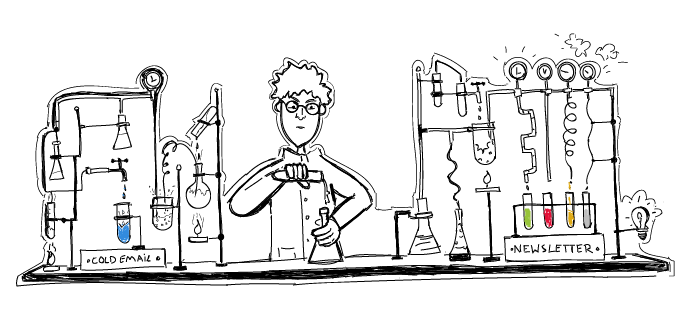At Woodpecker, we often hear people using the two terms “cold emailing” and “email marketing” interchangeably. In fact, cold emails and marketing emails differ, and they differ a lot. Sending cold emails that look like marketing emails won’t bring you many responses.
That’s why I decided to analyze the two forms and explain the differences between cold emails and marketing emails. Read on to make sure you’re not wasting your time sending marketing emails to your cold prospects, or watch the video:
Difference #1: The Recipients
When you send cold emails, you need to dig the Internet or use some tools to find your recipients’ email addresses yourself. You choose your recipients. These are not subscribers – they didn’t subscribe to your blog, they didn’t leave their email addresses on your landing page, they didn’t opt in for a free trial of your software.
They’ve most probably never ever heard of you. They don’t expect any emails coming from you, which is why your cold email will surprise them. And your task is to make sure they will be positively surprised.
Hi {{First_Name}}, I’ve seen you’re going to speak on {{Conference}}. I’m going too and I’ll be speaking as well. I thought that we could help each other promote our appearences by doing a joint promotion before the event. Would you be open to that?
The receivers of your marketing emails opted in to get them. They chose you. They’ve discovered you or your brand and intentionally sent their email address to you. They’ve signed up for a free trial, decided to enroll for your newsletter subscription, downloaded your ebook, or filled in an order form.
Hi {{First_Name}}, I mentioned last week that we’re releasing our first free course on cold emailing. You can check it out HERE. Once you complete the course, you get a personalized certificate that you can share on your social media!
It’s my pleasure to say that Woodpecker Academy is now out!
Having done that, they expect two things: a) that you will send them some automated emails from time to time, which will be sent to hundreds or thousands of other subscribers; and b) that they will have an option to unsubscribe from your mailing list anytime they want.
Difference #2: The Form
When it comes to the form, marketing emails are usually framed with carefully styled html templates, based on tables branded with your logo, company colors and fonts. Additionally, they will often include photos or pics, and buttons you can click to follow a link.
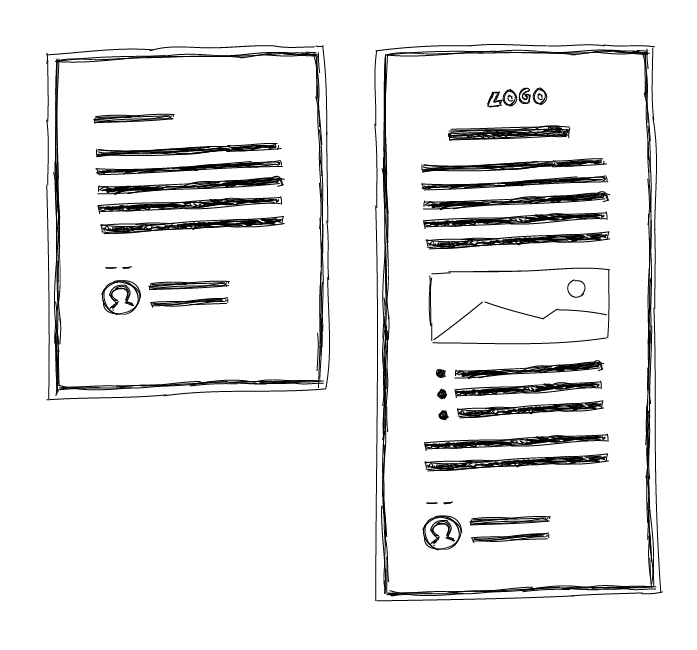
Sometimes, newsletters (which are also marketing emails) will be kept very simple in form, but in the end they will also include a link, which you are supposed to click to read a blog post, listen to a podcast, or download a piece of content as PDF.
Cold emails, in contrast, should look just like personal 1-on-1 emails you get from your friends and family, or specific 1-on-1 business enquiries you get from your clients and partners directly to your mailbox. Ideally, they should be plain-text emails, as simple in form as possible, including no more than just a few sentences. At the end of a cold email, your prospect should find a specific question or a request, not just a link to follow and serve themselves.
And that’s how we come to difference #3: the purpose.
Difference #3: The Purpose
The purpose of a cold email is to start a B2B conversation, which may in the future result in a business relation and/or a business deal. When you send a cold email, you don’t just expect your recipients to open the email and click a link inside. You want them to actually respond to you. That’s the primary purpose of a cold email – getting a response which is a start of a conversation.
Marketing emails usually aim at taking your recipients to another piece of your content: a blog post, a PDF, a podcast, or a website. They aim at regularly providing value to subscribers’ inboxes, in order to keep the subscribers connected to your brand, in case if they need your solution at some point.
With cold emails, in turn, you look for people ready to discuss their specific business needs, actually looking for a solution to their problem.
With marketing emails, you nurture your potential customer’s relation with your niche, content, and brand. You don’t expect them to be ready to buy anything from you within days or weeks. You don’t expect them to be in search for a specific solution. You just assume they are at the very beginning of their customer journey, while your cold email recipients ideally should be further in your sales funnel.
That’s why I always see cold emails as a part of a sales process, and marketing emails as a part of a marketing process. And yes, these two processes surely interweave. But you can’t expect to grow your sales by sending marketing-like emails to cold prospects.
Difference #4: The Personalization Level
Because your subscribers chose you and opted in to get some content from you, they will expect quality content. They will most probably be aware that the emails they get are being sent automatically with some kind of a marketing automation tool.
They will expect to see your emails in the ‘Offers’ tab of their Gmail. And they will be totally fine with an email starting with a simple “Hello John,” or even “Hi there,” until the content they get from you will be interesting and helpful.
Cold email recipients, on the other hand, won’t expect any emails from you at all. That’s why they won’t be looking for your email in the ‘Offers’ tab of their Gmail. They won’t read your email, if it starts with “Hi there”. And they will most probably delete your email, if you don’t catch their attention in the first line or two. And because they don’t know you, even the juiciest sentences about you and your company won’t catch their eyes as much as a sentence or two about themselves. And that’s the exact purpose of personalization in cold emails.
Think about it from your recipient’s perspective. Don’t you like to know what other people think about you? Aren’t you interested in opinions about your work? Aren’t you usually more interested in talking to people who expressed some honest appreciation, or admiration, of you and your work?
You might think that’s just being vain, but that’s how our emotions work. Plus, if someone sends you a message including some info about you, it means they actually had to spend some time on research and put some effort into learning about you. That’s something you can appreciate – that’s something which makes you eager to respond.
Difference #5: The Sending Volume
If you have a list of subscribers, you want it to grow as fast as possible. You aim at thousands of subscribers at least. And each time you plan a marketing campaign, you want to send it to all of them. Of course, you can segment your list, and send slightly customized content to different segments. But each campaign will include thousands of emails sent at a very short period of time (almost at the same moment).
When you build lists of prospects for cold email campaigns, you aim at small groups of people (sometimes even a little set of individuals rather than a group of people). You look for some specific information about each of your prospects. You incorporate the info into your email copy. That’s really time consuming, because you have to pick those people yourself, research their profiles, and qualify them as fitting your ideal customer profile.
That’s why the best cold email campaigns include no more than 20-100 prospects. Those prospects will get no more than 2-9 emails each (the first touch email plus 1-8 follow-ups). Each of those emails will be personalized, and it’ll feel like it’s tailor-made for the specific person.
So in an email marketing campaign, you send thousands of almost the same (or at least very similar) emails. Whereas in a cold email campaign, you send 50 emails, but each of those emails includes information specific to its addressee. So even if you base your cold email campaign on the same email template, custom information snippets make each of the emails unique.
Difference #6: The Sending Frequency
The best, most valuable newsletters I get come to my inbox regularly. This makes me expect an email from a company, or an influencer – I actually wait for it to come. Because the purpose of marketing emails is to keep the recipients thinking about a brand, and because the recipient is aware of an automation system involved in the sending process, the emails can, and should, be sent regularly (for instance once a week, or once a month, here are some stats about it >>).
Cold emails, in contrast, are never expected by their addressees. The follow-ups within a cold email campaign are supposed to be sent individually. And the personal character of the messages can only be ruined by a robot-like regularity of sending them. So as a cold email sender, you’re not supposed to send your prospects a follow-up every three days, or every seven days. That barely feels natural or personal.
The deliverability time of your cold emails and follow-ups plays a crucial role in convincing your prospects that you check up on each of them individually. So even if you use automation, your cold emails should never feel automated.
Follow-up Emails: How Many & How Often? >>
Difference #7: Sending Tools
And here we come to the difference between email marketing automation tools and cold email automation tools. It really does matter how you send each type of your emails.
I’m sending our newsletters using MailChimp. You can also send marketing emails with apps like GetResponse, Freshmail, Campaign Monitor, or Autopilot. But these are not the tools to send cold email campaigns. Why?
First, and foremost, many of them do not allow sending cold emails in their terms of service. Second, they send the emails in bulk using their own SMTP, which is why your addressees will see the emails sent by those tools in the “Promotions” or “Offers” tabs of their mailboxes – which is where marketing emails belong.
But you don’t want your cold emails to get into “Promotions”. You want them in the “Primary” folder of your prospects’ inbox.
Tools dedicated to send cold email sequences, like Woodpecker, work in a different way than marketing automation tools. Firstly, Woodpecker sends emails using your own SMTP server. The emails are actually sent from your mailbox, Woodpecker just automatically initiates the sending process.
Secondly, the emails are sent one by one at random times within the time frame you set, not in bulk. So you definitely won’t be able to send a thousand emails an hour from one email address using Woodpecker. Anyway, why would you even want that? 50 emails a day is just perfect, if only the emails are well-targeted and carefully crafted.
For those two reasons, your cold emails can get to your prospects’ ‘Primary’ inboxes, and they look exactly like you sent them by hand, while in fact you scheduled them to be sent automatically.
What’s in it for you?
Just a quick summary in 7 points I want you to remember from all this:
As to the recipients
Pick them carefully for your cold email campaigns. It’s not about building a list of a thousand people you’ve no idea about. It’s about hand-picking 50 people whose companies match your ideal customer profile.
As to the form of your cold emails
Don’t confuse them with newsletters. Keep them short and as simple as possible. This isn’t a design contest. Your email should look like a regular message from a friend, not like a branded bulletin presenting your offer.
As to the purpose of your cold email
Remember it’s about starting a conversation. Don’t just give your prospects a link to follow so they could sign up for your free trial, and hopefully buy your product in 3 days or so. Try to build a really valuable B2B relation before you expect anybody to buy anything from you.
As to personalization
Don’t end up on simply including your addressee’s first name in the salutation. Go further than that: show them why you picked them to talk to, tell them what you liked about their content, give them some value before you ask for their time. By making every email unique, you make a positive impact on your deliverability, as well.
As to the sending volume
It’s not about how many emails you send, but what emails and to whom you actually send them. 50 a day is just fine if you aim at at least 20% reply rate from a well-targeted group of prospects.
As to the sending frequency
Don’t try to poke your prospects every 3 days with a follow-up. Schedule the follow-ups in a natural, non-intrusive way. Give your addressees time to actually find some time to respond to you.
As to the sending tools
Don’t try to hack the system by sending your cold emails with marketing automation tools. This will negatively affect the deliverability of your emails and the effectiveness of your campaigns. Send your marketing emails using marketing automation, and your cold emails using cold email automation.
READ ALSO
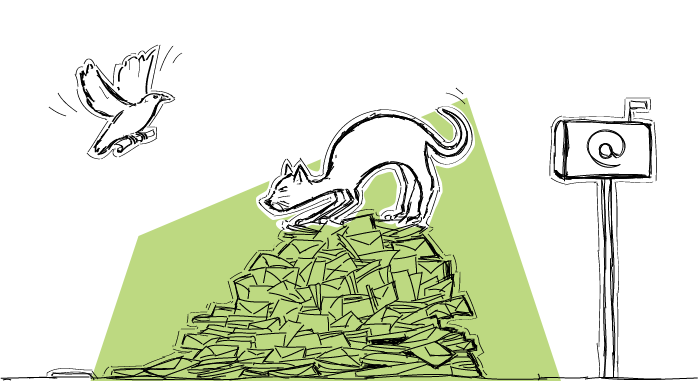
10 Reasons Why Your Cold Emails Are Getting No Response
This week we have a guest post by Nina Cvijovic, who is a researcher and writer at Etools. Nina analyzed 10 reasons why your outbound email campaigns may not be reaching the response rate you expect them to, or are not generating any responses at all. Either way, there's always a field for improvement in cold emailing. So go through the 10 checkpoints below, and read some advice on how your response rates can be improved.
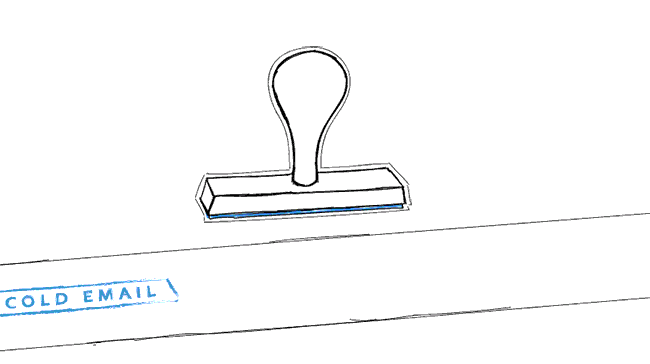
Cold Email Clichés, or What Your Prospects Have Seen Too Many Times to Care
If you've been into cold emails for some time, or if you get hundreds of cold emails into your inbox, you are probably able to quote some cliché phrases and structures showing up over and over again for years. I described just a few of them below. Check if you know them. Check if you use them. Check how to replace them, which may probably boost your reply rates.
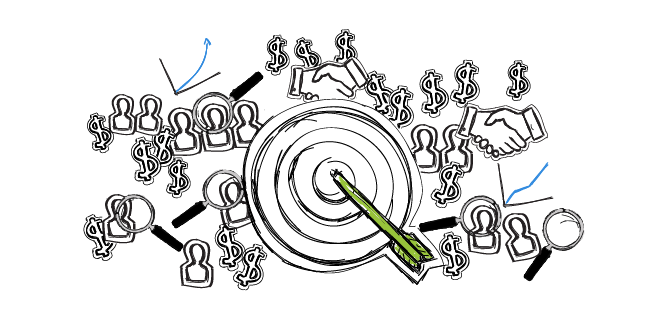
Account Based Sales Development 101: What Is It? How Does It Work?
If you're doing outbound sales, you've probably heard about the ABSD (Account Based Sales Development) trend lately. Is it new? Is it for everyone? Is it a revolutionary approach that will bring you $$$ as soon as your sales team adopts it? What is it, really? Check out the short introduction to ABSD in simple words.

